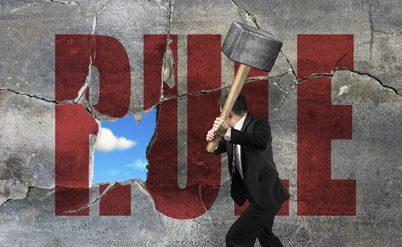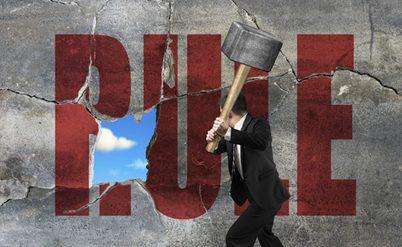

 In the hobby of audiophilia, there is an implied set of rules about how one should enjoy music and audio. Often, it's considered a solitary hobby. Audiophile rooms tend to be small, dark, and messy, with piles of gear stacked everywhere. Forget cable management. Equalization is considered a dirty word and should be avoided at all cost. And of course, vinyl is far superior to any type of digital music, even hi-res.
In the hobby of audiophilia, there is an implied set of rules about how one should enjoy music and audio. Often, it's considered a solitary hobby. Audiophile rooms tend to be small, dark, and messy, with piles of gear stacked everywhere. Forget cable management. Equalization is considered a dirty word and should be avoided at all cost. And of course, vinyl is far superior to any type of digital music, even hi-res.
I think that many of these old-school audiophile rules are absurd and don't reflect where the hobby is headed. For instance, why do audiophile rooms need to be ugly? Why do they have to make your wife cringe? Today's speakers are light years ahead of where they were a decade ago in terms of design, custom finishes, and overall form factor. It's much easier to integrate them into to the look of your home and still get great performance.
One trend that is picking up a lot of steam is rack-mounting gear. I've been doing it for years. Although it does add cost to your overall investment, having all your gear neatly mounted in a fan-cooled rack with easy access to the front and back is a real luxury. I often invite guests to "see my rack," and I've only been slapped a few times for the innuendo. Maybe it's just the OCD in me, but there's something very satisfying about seeing my gear properly spaced and professionally installed, with all the cables perfectly cut and neatly arranged. The days of amps on the floor and speaker cables propped up on little saw horses should be behind us. Get your gear out of the way, and let the music be the focal point.
Second, the idea that audiophiles have to listen alone in a darkened room is just silly. Everyone loves music; it's an inherently inclusive and social activity. Why not invite your kids into the audio room? Let them play some of their favorite artists and then try introducing them to a few of yours. Why couldn't you have a couple over for dinner and then retire to the music room for an after-dinner drink with some low-volume but high-quality music playing in the background? Many people may have never heard a system like yours. Perhaps you will create a new fan of high-resolution music. Outdoor audio is gaining a lot of traction in the custom world; it's easier than ever to craft a high-quality outdoor system to occasionally enjoy your beloved hobby in a new and interesting space.
Room correction has always been a heated topic for audiophiles. Eons ago when I sold Cello products with Mark Levinson, audiophiles would get themselves all worked up over the idea of "program EQ," despite the fact that damn near anyone could walk in and improve on the sound of mid-1990s CD-level digital music with the twist of a dial on the old Cello Audio Palette or Palette Preamp. For all the phase issues that audiophiles complained about, they couldn't argue the fact that each and every studio where their favorite records were made used EQ on the house speakers--and even more EQ on the 128-plus channels of the recording. Today's digital room correction is so much more sophisticated. Software from Trinnov, Dirac, and Anthem can quickly and easily smooth over room issues and help your speakers sing more beautifully in your specific room. Why in the world would anyone fight this concept when the alternative is the neurotic in-and-out swapping of components in hopes of finding audio's holy grail? The holy grail is easily measured and achieved today in the digital domain.
I've bashed vinyl plenty of times, and I stand by my argument that it sucks by today's HD music standard. Vinyl's maximum dynamic range is about 65 dB. Loud events like a snare-drum snap are easily double that. Simply put, vinyl physically can't reproduce the dynamics in your music, but what it can do is bring that "warmth" (otherwise known as distortion) to your super-low-distortion electronics. Other than nostalgia, why would anyone want to invest in such a low-resolution format when you can enjoy a hard drive full of master-tape-quality audio? Master tape, I say! Additionally, for $20 per month on TIDAL, you can access damn near every CD ever made at any time. It's a whole new world. Embrace it.
Another audiophile rule that needs to go is the idea that your stereo system shouldn't have a subwoofer. Yes, it should. Today's high-performance subwoofers are more affordable than ever and include the ability to easily cross them over appropriately and tune them to your room. Who in their right mind invests tens of thousands of dollars in audio gear and speakers, only to sacrifice the bottom octaves? The idea that subwoofers are only for bombastic home theaters is an old concept. A good sub leads to a better-performing system, possibly for a lower price overall.
Like it or not, old-timers, the times they are a-changin' when it comes to audio. Just as it's okay to order a robust white wine with your steak, it's okay to enjoy your audio in new ways, to embrace new technologies, and to bring the experience out of the basement and into the light of day.
Additional Resources
• What Gear Would You Choose to Build a $5,000 System at HomeTheaterReview.com.
• Turning a Mac Into an Audiophile Source Component at HomeTheaterReview.com.
• High-End Audio at CES: A Post Mortem at HomeTheaterReview.com.